An interview with Ensemble Affect co-founder, Seth Van Embden
Starting a non-profit music ensemble is a dream shared by many musicians, but turning that dream into reality is no small feat. It demands not only persistence and organizational skills to secure funding, connect with presenters, book venues, and cultivate an audience, but also a unique camaraderie among the musicians to create a sustainable and enjoyable ensemble culture. Ensemble Affect, a baroque chamber music group, is a shining example of such an achievement. What began as a group of friends has blossomed into a nationally recognized chamber ensemble, celebrated for its innovative programming and performances on baroque period instruments. Their concerts range from children’s shows and meditative events in yoga studios to interdisciplinary collaborations with dancers. This Spring 2025, Ensemble Affect will reach an exciting milestone, performing their program Home Away From Home at the prestigious San Francisco Early Music Society.
As a proud member of Ensemble Affect, I have the privilege of performing with this inspiring group several times a year. Recently, I had the pleasure of interviewing one of its founding members, violist Seth Van Embden, to discuss the challenges and triumphs of building a non-profit music ensemble from the ground up.
Kiyoe: Would you like to introduce yourself for people who don’t know you?
Seth: My name is Seth Van Embden, and I am a third year viola fellow with the New World Symphony in Miami Beach, Florida. I also am a founding member and a director of Ensemble Affect, which is a baroque and early music group.
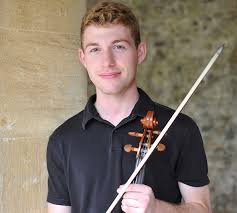
Kiyoe: Can you tell me about Ensemble Affect?
Seth: Ensemble Affect is a musical group that was formed to perform and study and enjoy and celebrate music that was written in the 1600s, 1700s, and even 1800s. We also explore the style of playing that was prevalent then, which is very different from the way that we perform music now. But I think another reason for forming the group was to have more time with friends. And I think that’s that’s one of the best parts of it.
Kiyoe: You mentioned the style of playing is different. Do you want to speak a little bit about why it’s different?
Seth: You can go at that from multiple angles. The instruments that we play on in modern times are very different from what were used in the baroque period or classical period; strings were made of gut and the bows were shaped differently- they were convex instead of concave. So that angle provides an interesting challenge – exploring the music in those historical terms. But then that’s only the tip of the iceberg, because from there, you can more easily delve into the actual style of playing that was influenced by the materials that they were using. And that is also quite different from what we do today. So, when we’re looking back at the baroque period and classical period, and we’re trying to discover and emulate what was happening then, we’re trying to re-imagine the current tradition in terms of articulation and improvisation, and even the flow of the concert.
Kiyoe: How did the members of Ensemble Affect meet?
Seth: A few of us met at the Berwick Academy (a summer baroque festival). It’s interesting because now Ensemble Affect is sort of going through a rebirth. When we initially started in the summer of 2019, it was me and (violinist) Pauline Kempf and Adam Maloney, who’s a bass player. And we three really wanted to be playing more Baroque music in Chicago. We really wanted to create our own opportunities. And we also met (cellist) Morgan Little, who was moving to Chicago that summer and had gone to the Juilliard Historical Performance program. Things started to fall into place in terms of personnel. We also had Alexandria Hill, who was one of the violinists in the group, and we had Bahareh Poureslami. She was our vocalist.
So we had a nice little group happening. And then, the pandemic hit and things got derailed and most of the group moved away. But then we started to rebuild things as the pandemic lessened.
During that first summer at Berwick, we had met (violinist) Phoebe Gelzer-Govatos and really gotten along with her well. And she’s in Ann Arbor, so not too far. Once things started to pick up again with Ensemble Affect, we started inviting her to come play with us. And of course, she was super willing and just the most wonderful person. So now Phoebe, Pauline and I sort of are the three head honchos of the group running things. And now, of course, you and (keyboardist/gambaist) Sun Chang are also super involved and a core part of the group.
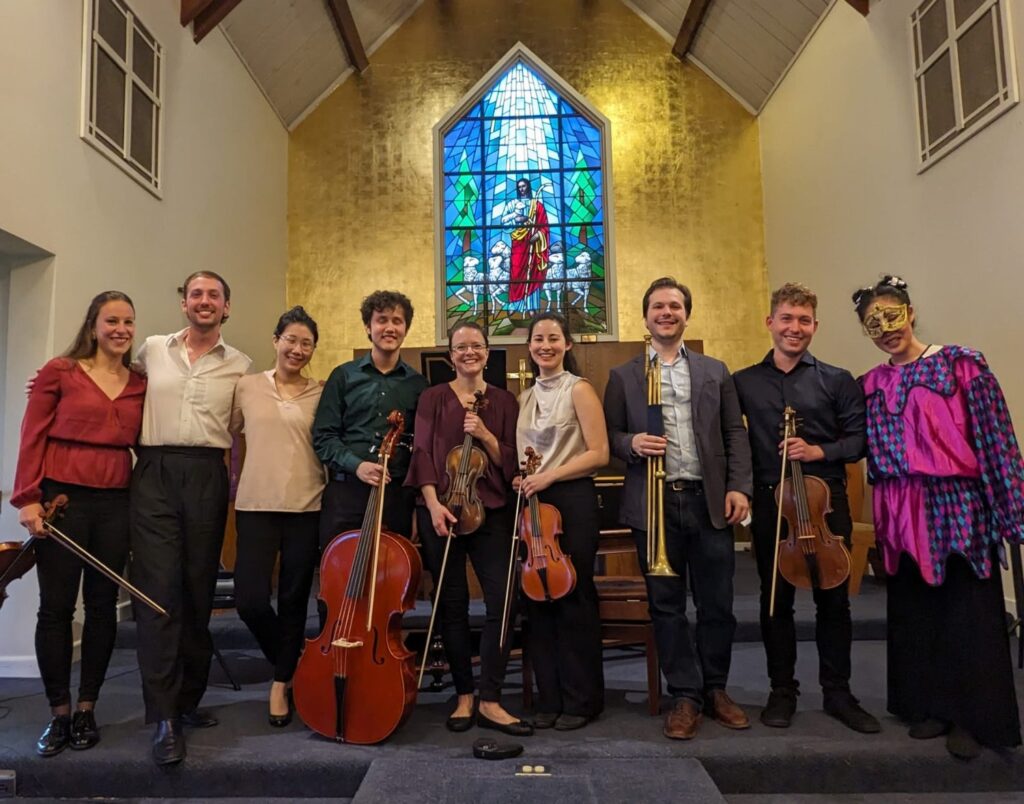
Kiyoe: Where did the name Ensemble Affect come from?
Seth: In the beginning of the ensemble, Alexandria and I were the ones who were leading the charge of figuring things out. We were trying to come up with a name, and it had been a couple of weeks of texting each other back and forth.
And then one night, I just had an idea and I sent an early idea of that to Alex, thinking, what if we use the word “affect” somehow. Because we wanted it to not necessarily be a pun, but to have multiple meanings and to have a more modern connotation to the name. We wanted to be relevant both in terms of historical idea, but while paying homage to historical sensibilities, we wanted to also have a name that could function in a more progressive sense. So we came up with this idea of Ensemble Affect.
The name Affect actually can apply, of course, to the baroque idea of “affect”, which is the way of interpreting music based on the vibe of it. But also in a modern sense, it opened up the ability for the ensemble to take different routes: we could be an ensemble that affects things in positive ways. We could be charitable, we can offer free concerts, we can influence emotions, and of course any group can do that, but I think having a name that reflects that almost gives us more license to do it and more reason to do it. It keeps the mission inside the name.
Kiyoe: I really like that! What was the process of forming a music ensemble from scratch? For example, nonprofit status is something that might be a little daunting to some young ensembles, or they might not even be sure why they need a nonprofit status.
Seth: In the very beginning, we were lucky because everyone lived in Chicago. That makes a large difference when you form an ensemble. We started things off unincorporated and just as a group of friends, using the name Ensemble Affect. Our first concert happened in December 2019.
Baha had this idea of doing an all-Bach concert, and we did that at the Chapel in Evanston. We announced to the audience that we were this new ensemble. Because of the time of year and the auspiciousness of being a new ensemble, we received quite a few donations. It was a free concert, actually. But we ended up using the donations to fund the next couple of months of making the ensemble more official.
So that led to us over the next three months having meetings in my apartment in Chicago. We would plan the next set of concerts, what we wanted the group to be, the leadership structure, and the next steps for becoming incorporated. By the end of that January, we applied for incorporation. At least in Chicago, when you incorporate, you need to have at least three of the members’ residences in Chicago or in Cook County.
You also have to have a board, but your members can be a board. I think a lot of groups don’t realize that. They think that they need to have an advisory board outside the group, which you should have, but it’s not something that you have to start with. That enabled us to be a 501c3 nonprofit in Illinois. We actually got approved in January after we applied, but they didn’t send anything out because of the pandemic. And we didn’t know until August or September.
Kiyoe: So, a long road for the non-profit ensemble status.
Seth: Yeah. We ended up maintaining the nonprofit status, but then letting it go after a while because everyone moved. Once everyone was moved away, I was the only one left in Chicago at that point. It’s not hard to keep up your nonprofit status, as long as you’re filing each year and keeping records. But once I moved away to New World in Miami, we decided it’s not worth it because we were not doing a lot of concerts. So we let it go. And then, of course, that’s when we started to do a lot more concerts. So now we’re actually sponsored by Fractured Atlas. That’s just a stopgap measure.
We’re approaching things differently now. We’re going to incorporate in California because Pauline’s there. But we’re going to build the board first. We’re going to, of course, have ourselves on the board, but we’re going to also build an advisory board. The benefit of that is that we have the power of people who are not in the ensemble to help with the maintenance of the group. And that’s really important. That was something that we all really struggled with when we were doing everything ourselves. Running your own group means that every job that you can think of is your job. So the more that you can offload, the better. We’ve got a good following now in the Bay Area, and we’ll be able to be incorporated by this time next year. That’s our three-year plan right now.
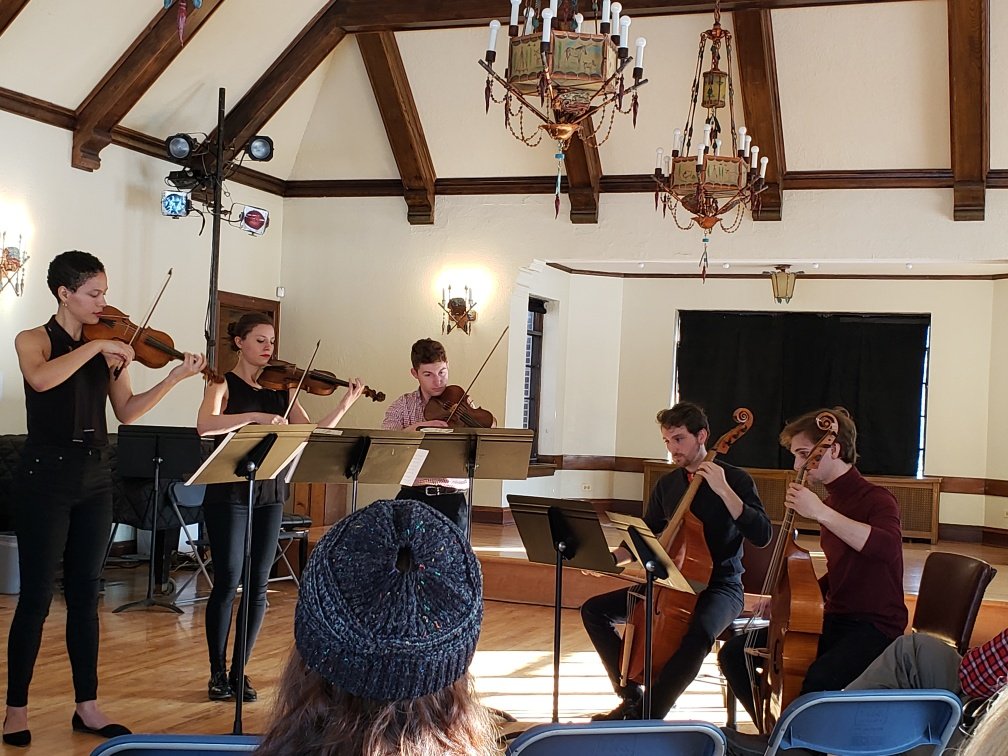
Kiyoe: What are some of the benefits of having your own ensemble rather than only playing in ensembles that are already established?
Seth: The best benefit is the creative license that you can use. If that’s something that interests you, and you like programming, there’s no better way than to have your own ensemble. That gives you the license and ability to get creative and come up with programs that you are passionate about. That’s something that I’ve found out through this group that I really like doing. As you know, there’s not an overwhelming amount of repertoire that features the viola in baroque music. So a lot of times I am not going to be playing as much as the violinist or cellist, but I don’t mind that. Actually, I found that I really like programming for the sake of artistic creativity. And, I don’t have to play on everything, which is kind of cool.
I’d say that that’s one of the best parts of it. Also, crafting the group sentiment as well. What’s the actual reason for the group, and what’s the message that we’re trying to send? And of course, you learn a lot about how to program, how to get incorporated, how to work with marketing and sales, selling tickets and how to do ads. I got really good at Canva.
Kiyoe: It seems like a lot of new, young, baroque ensembles have been forming lately. What do you think is so appealing about Baroque music to young musicians?
Seth: Well, I think this rise in early music ensembles is because the classical music market is asking for it. Not only just because the audience members are really into it, but also because the musicians themselves are interested in trying something new.
It’s something I really feel passionate about. When I started at the New World Symphony, that is a group that is playing on modern instruments and music mostly from the romantic era onward. It was important to me to try to introduce that exciting baroque style of playing and investigation to New World. I did a project my first and second year here where we converted the orchestra into a baroque ensemble with gut strings and baroque bows and baroque percussion. It was really interesting to see how positively the orchestra responded to it. People were so thrilled by getting out of their comfort zone, and stepping into this different sort of creativity. And then the audience members, too: when they go to see a historical performance group play, they get caught up in that emotion.
It’s also rhetorical. That’s the whole point of baroque playing. It’s kind of like language. You’re saying something from your instrument. And the audience is able to hear that you’re saying something. And that’s what’s so engaging about it for everyone involved. I’d say that’s probably why there are more ensembles. Also, historical performance is now becoming more mainstream. It’s not just for the academics anymore.
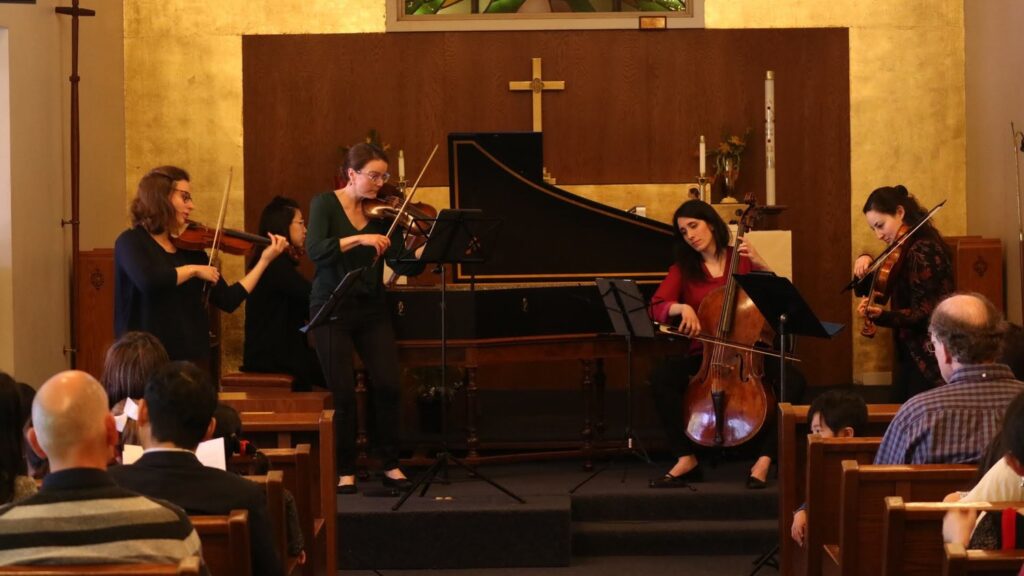
Kiyoe: What makes Ensemble Affect stand out from all these other young Baroque ensembles?
There are a few things that make us stand out. The one that I think is most important is that our main goal is to be led through a friendship model. We play with our friends, we perform and work with the people who we like and love to be around and have a good time with.
The purpose of the group is to maintain those friendships and to celebrate them and to have a reason for being together, even though no one lives in the same city. I think that’s really special, and that comes through in our performing. I also think that our style of performing is a good balance between a relaxed, comfortable and warm performing persona. We make sure that we are interacting with the audience, not only through playing, but also verbally and through engagement like kids concerts and yoga-studio concerts.
The children’s shows and the yoga concerts are our secret weapon because no one else is doing those kinds of thing. They’re so unique and so interesting. We’re doing something in a different context than what most concerts are. We’re showing the audience that a concert doesn’t have to be formal. But we also do offer more formal concerts. Even in those concerts, we’re still open to a more relaxed setting, but we have this academic forward approach. A lot of our members in the group are interested in the historical context behind the music and composers. And because that’s something that we’re interested in, I think the audience responds to that.
We don’t play the most bombastic stuff all the time. We’re not shredding on stage 100% of the time. And that’s one way to engage your audience, of course. But the other way is to show this genuine interest in everything that you’re doing, and people pick up on that.
Kiyoe: What are some words of wisdom that you would like to impart to young musicians who are considering forming their own non-profit music ensemble?
Seth: I think that group hierarchy is important. It’s not the most comfortable topic because everyone wants to be diplomatic. But I think something that’s really helpful is having a framework for who does what and who is making the calls. So if you’re even trying to decide on a group name, how do you decide that name? Is it by the majority vote? Is it by the two founders? Having a framework in place for how you decide things and who is making those decisions is very important in terms of getting things done and leading the group in a direction that it needs to go in.
And don’t be daunted by 501c3 incorporation, because it’s not as difficult as you might think. But do make sure that you do everything very thoroughly. Make sure that you have an idea of who you would like to be on your advisory board, even if the board is just made up of your own members. Make sure that you have an idea of who could create a bigger board. Otherwise you will be doing a lot of work yourself. And then you also want to make sure you have the ability to track your finances really carefully and accurately. That gives you the ability to take advantage of all the great benefits of being a nonprofit, especially tax discounts.
The other big advice that I have is to make sure that your group members are people that you love and enjoy, and that people are on the same page in terms of what they want from the group. The group’s mission is the most important thing to make sure everyone’s aware of and uphold. Because otherwise, if you have conflicts of interest, it’s not going to be as fun.
Kiyoe: What are some of Ensemble Affect’s goals, and what are you looking forward to?
Seth: We are definitely looking forward to our program in March with the San Francisco Early Music Society. That was a really exciting thing to be awarded, to play on their series. That program explores composers of the baroque era who left their home countries and worked in new countries. We’ve got composers who went to the Americas, to China, to other European countries. So it’s really interesting- the diaspora of these composers in that time period, which you might not think was possible.
One of our goals for the future is to reincorporate in California, which we’re on track to do. But that means building our board, and we have quite a few great people in mind. And another big goal is to build our collection of media, so we’ll keep making recordings. Last year was really the start of our serious recording process and creating some beautiful recordings.
If you’d like to see Ensemble Affect at the San Francisco Early Music Society, you can plan your visit here. You can view Ensemble Affect’s other upcoming concerts, including children’s shows and meditation events at https://www.ensembleaffect.org/concerts. Videos of past concerts are available on their YouTube Channel.
You can also read my interview with Ensemble Affect keyboardist and gambaist, Sun Chang, here.
Did you have any takeaways from Seth’s interview? Feel free to leave a comment below.
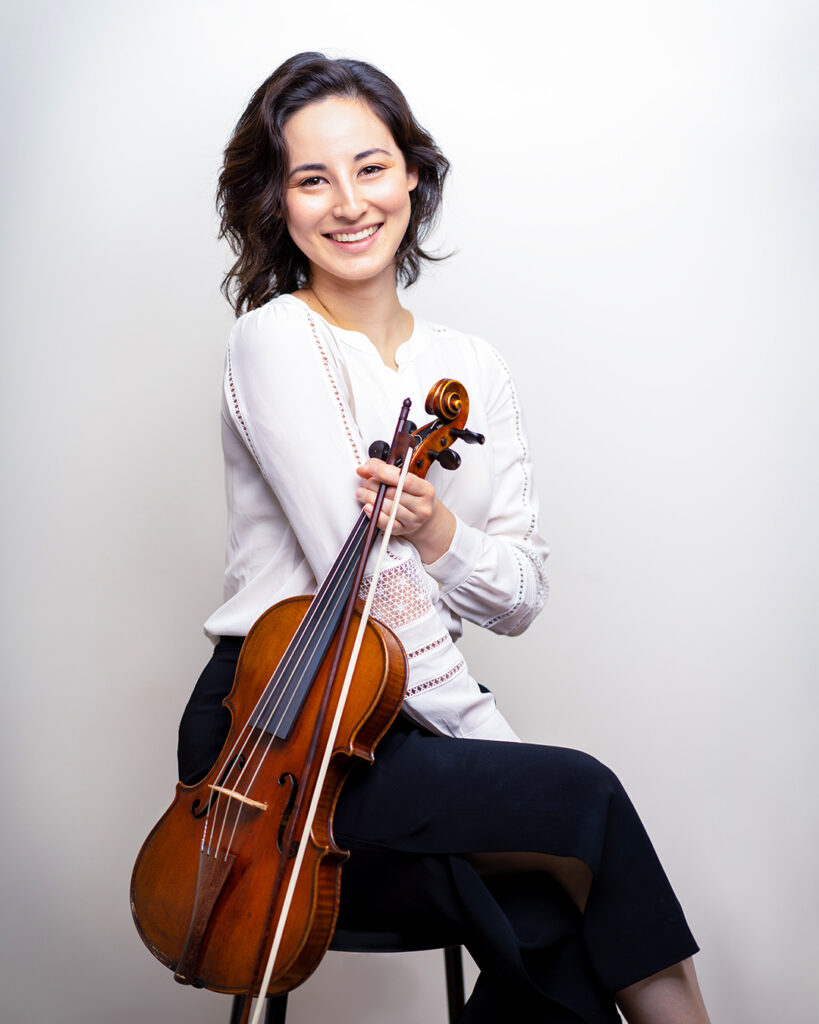
Kiyoe Matsuura is a freelance violinist specializing in baroque performance. She is also co-founder of Ensemble Vitelotte which presents music by historical women composers, and she runs a YouTube channel focusing on violin pedagogy and student repertoire. She has written numerous articles on violin pain prevention, practicing, and pedagogy.



